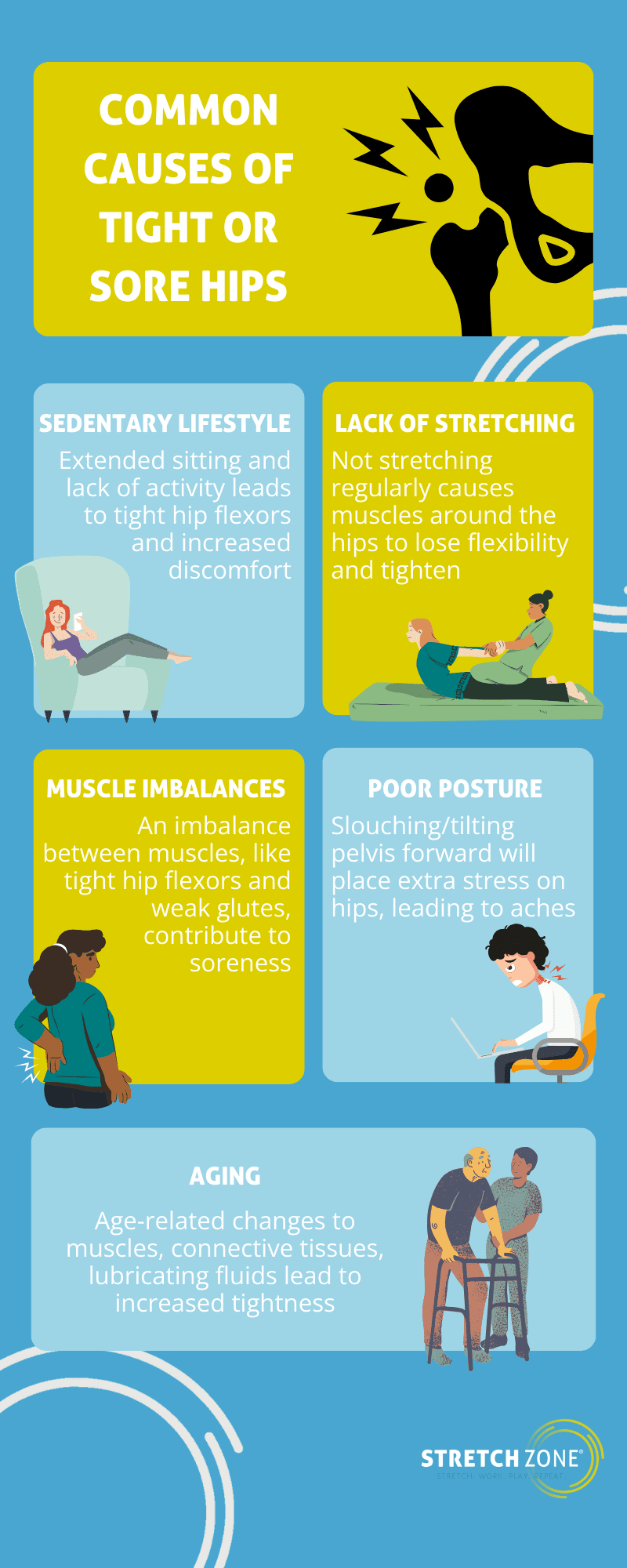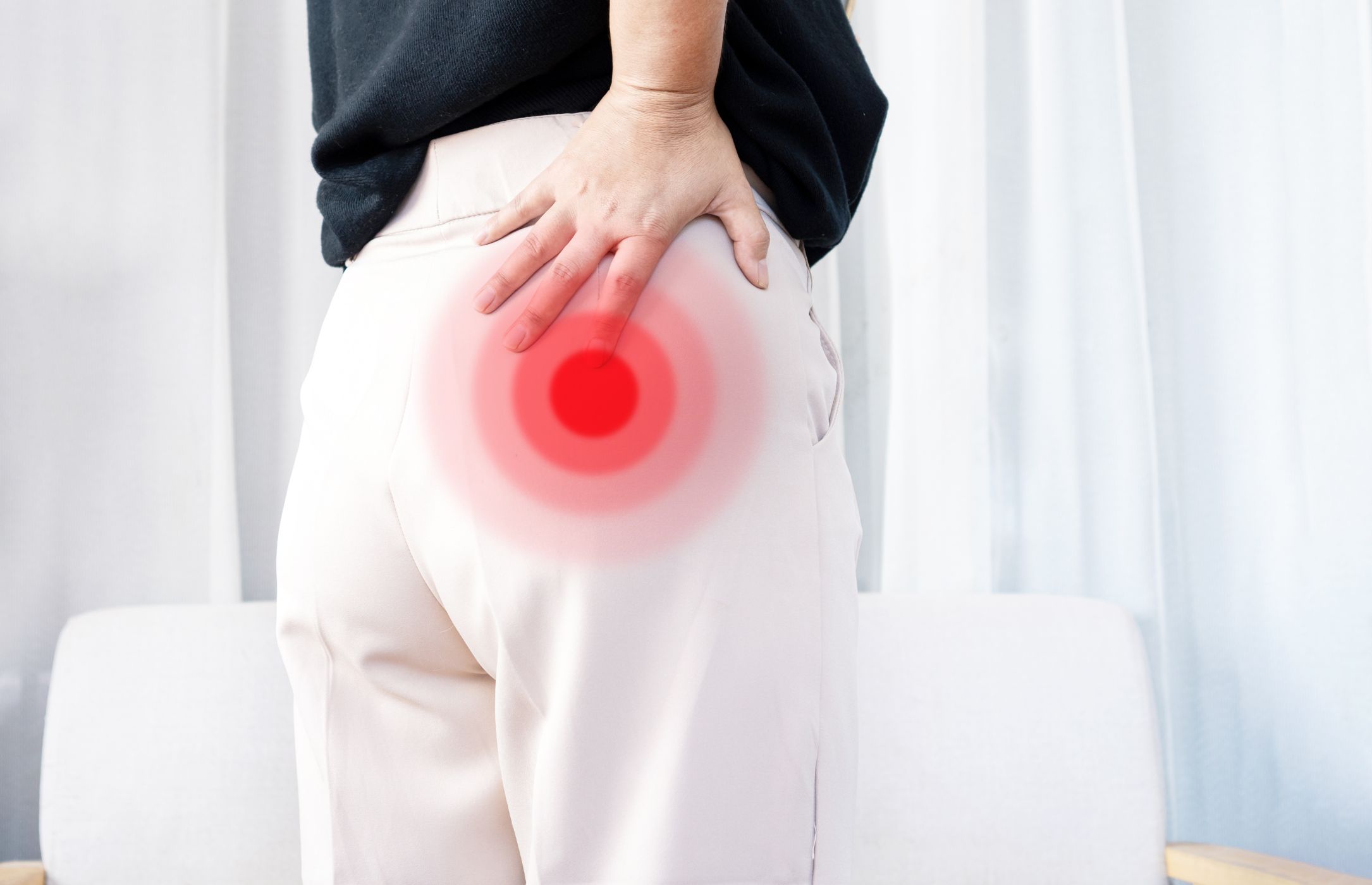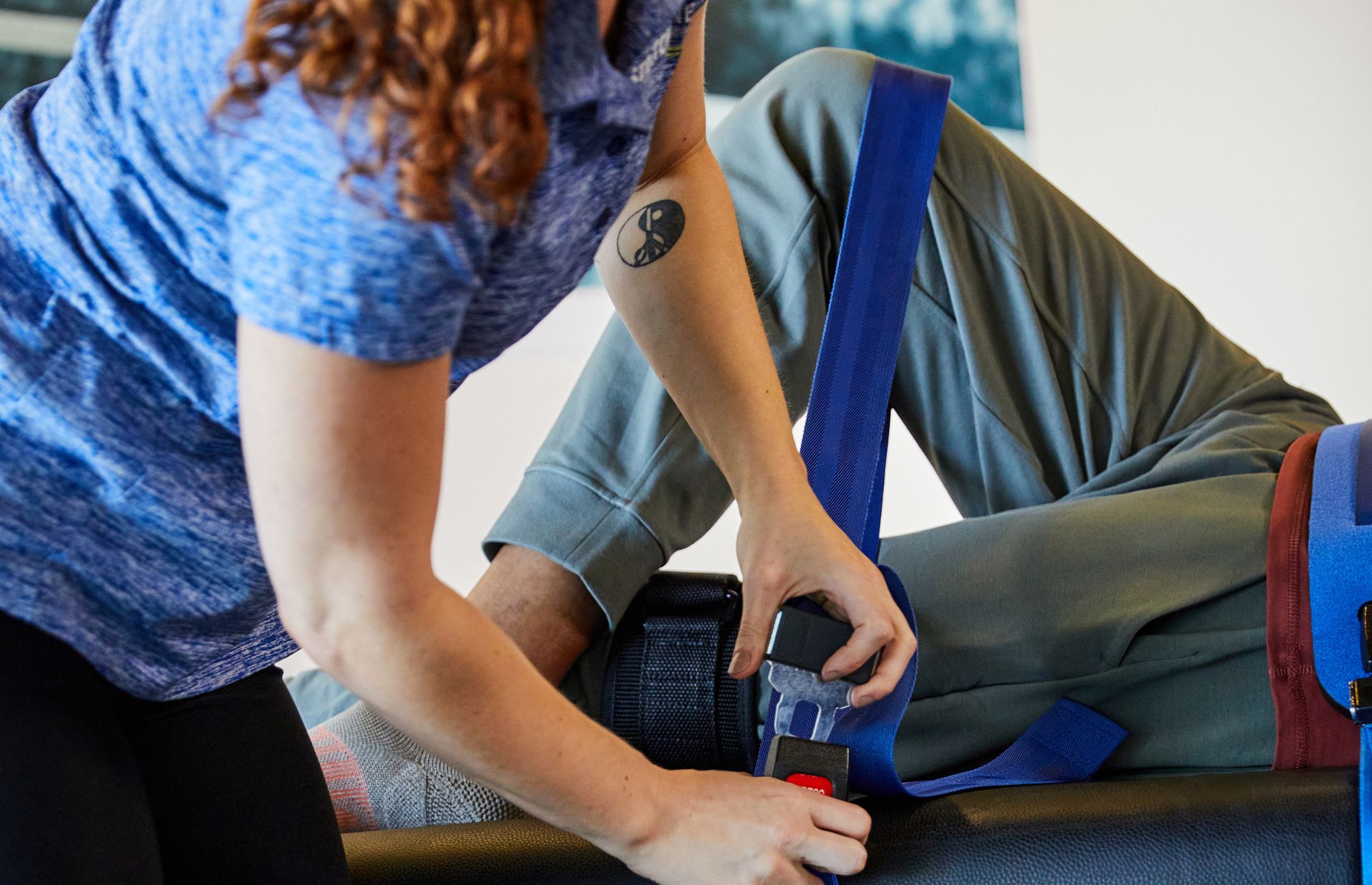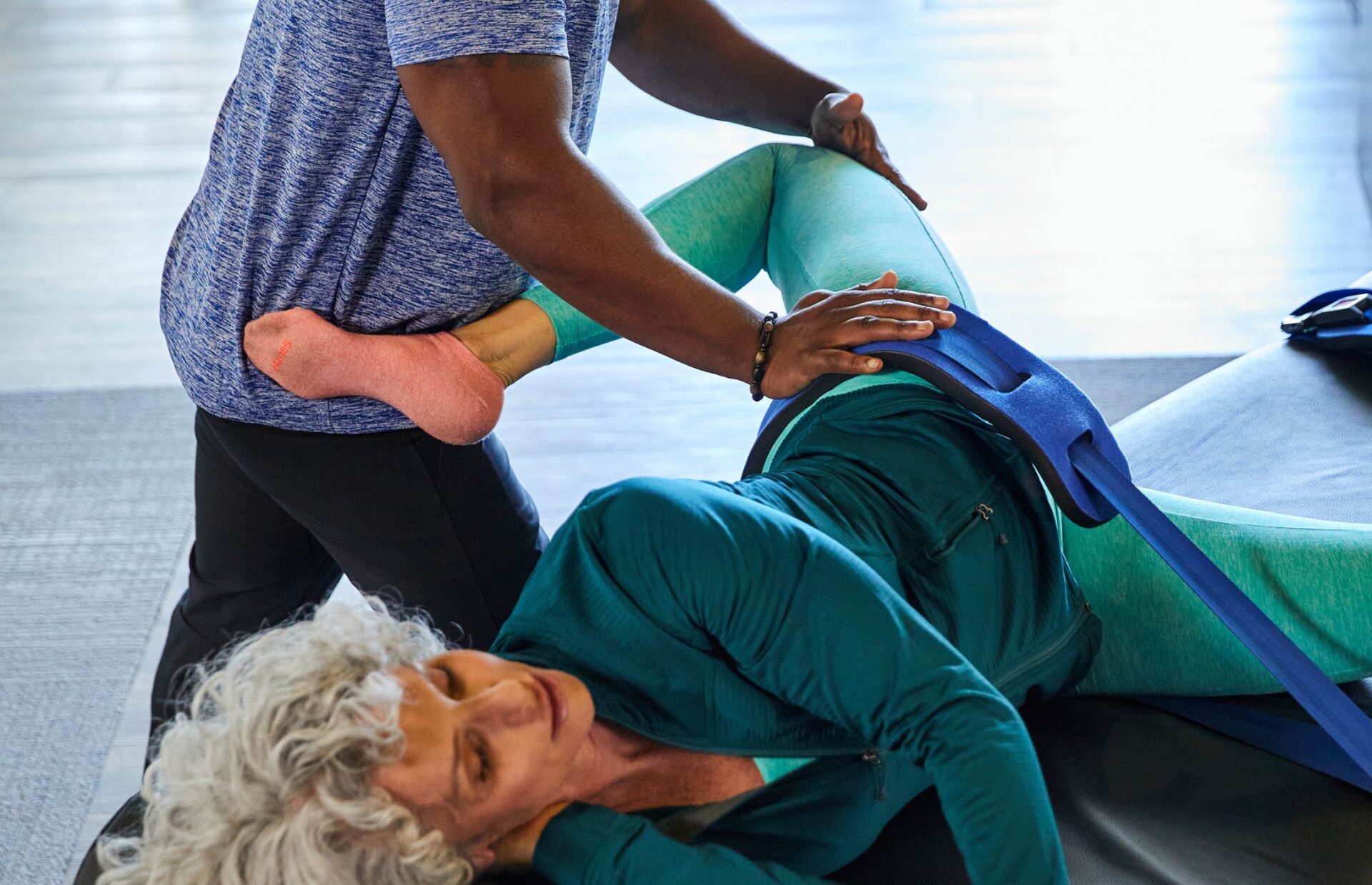
Tight or Sore Hips: What Causes Them and What You Can Do
Your hips quietly support you through every move, from sitting to standing, walking, and running. We tend to overlook their significance until they’re not working as they should. Consider the challenge of standing up or taking a step when your hips feel stiff—it turns routine activities into a difficult ordeal.
Recognizing the important role of your hips and the challenges brought by stiffness, we explore ways to understand and address these issues. From incorporating hip flexor stretches to exploring strength training and lifestyle changes, let’s uncover the reasons behind hip tightness and soreness, aiming not just for comfort but for a renewed sense of freedom in your everyday activities.
Understanding Hip Anatomy
To understand why hips can be prone to discomfort, let’s break down their basic anatomy.
Hip Joint
The hip joint is a ball-and-socket joint, connecting the thigh bone (femur) to the pelvis. This design allows for a wide range of movements, from simple actions like standing to more dynamic activities such as walking and running.
Muscular Support
Surrounding the hip joint are important muscles that facilitate movement. These include the hip flexors at the front, responsible for lifting the leg, and the gluteal muscles at the back, essential for stability.
Connective Tissues and Ligaments
Ligaments provide stability to the hip joint. Additionally, connective tissues and cartilage within the joint contribute to smooth, frictionless movement.
Why Discomfort Takes Place
The hip’s tendency to feel discomfort is closely tied to its important role in daily movements. With a ball-and-socket structure that allows for various activities, the hip sees constant use, making it prone to occasional discomfort.
As we said, supporting this joint are vital muscles, including the hip flexors in the front and the gluteal muscles at the back. While these muscles actively assist in movement, their continuous engagement can lead to overuse or imbalances, occasionally resulting in discomfort. Additionally, the ligaments and connective tissues that provide stability to the hip joint might experience strain over time, contributing to occasional sensations of tightness.
The mix of ongoing movement, muscle activity, and the intricacies of the joint structure renders the hip a dynamically active yet periodically sensitive area of the body.
Signs of Tight Hips
Sometimes, the signs of tight hips might slip under the radar, brushed off as minor discomfort or attributed to other causes.
It’s important to recognize these indicators early on, as neglecting them could lead to more significant issues down the road. Here are subtle yet telling signs that it’s time to pay attention to your hips for the sake of your overall well-being:
- Limited Range of Motion: If simple movements like lifting your knee or bending forward feel restricted, it’s a hint that your hips may be tighter than they should be.
- Discomfort: Persistent discomfort, especially during prolonged sitting or movement, is a signal that your hips need some attention.
- Lower Back Discomfort: Aching in the lower back might not always be a back issue—it could be linked to tightness in the hips affecting your overall posture.
- Postural Changes: Subtle shifts in how you stand or walk, like a tilting of the pelvis or a forward lean, can be signs of underlying hip issues.
- Difficulty Standing from Sitting: Struggling or experiencing discomfort when rising from a seated position could indicate tightness in the hip flexors.
- Discomfort During Exercise: If you feel discomfort in the hips during or after exercise, particularly activities involving hip movement, it’s time to address potential tightness.
- Clicking or Popping Sensation: Unusual sounds, like clicking or popping, in the hip joint may point to tightness or muscle imbalances.
Paying heed to these signs early on allows you to take proactive steps, ensuring your hips stay flexible and healthy in the long run.
Common Causes of Tight or Sore Hips
Understanding why hips feel tight or sore means looking at our daily habits and how they affect this important joint.
Sedentary Lifestyle
In the era of prolonged desk jobs and extended screen time, sedentary living takes a toll on our hips. The hip flexor muscles, responsible for lifting our legs, tend to tighten during extended periods of sitting. This prolonged shortening can result in discomfort and restricted mobility when we eventually stand or move.
Lack of Stretching
The flexibility of our hips thrives on regular stretching. When we neglect to incorporate stretching into our routine, such as hip flexor stretches, the muscles surrounding the hip lose their elasticity. This loss can translate into tightness, hindering the joint’s ability to move freely and comfortably.
Muscle Imbalances
Achieving a harmonious balance among the muscles surrounding the hip is important for joint health. Imbalances, where certain muscles are stronger or tighter than others, can contribute to discomfort. For instance, overactive hip flexors in comparison to underused glutes can create an imbalance that manifests as tightness.
Poor Posture
Our posture is a silent architect of hip health. Poor posture, whether slouching in front of a computer or adopting a stance that tilts the pelvis forward, places additional stress on the hip joint. This chronic stress can gradually lead to tightness and discomfort.
Overuse or Repetitive Motion
Activities that demand repetitive movement from the hip joint without adequate rest can strain the muscles. Whether it’s consistent running, cycling, or certain exercises, the cumulative effect of overuse can result in muscle fatigue and eventual soreness.
Injury or Trauma
The aftermath of injuries or trauma to the hip area can linger in the form of tightness. Scar tissue formation and imbalances in muscle function resulting from past incidents contribute to persistent discomfort.
Aging
Aging introduces inevitable changes to the hip joint. The wear and tear experienced over the years, reduced production of synovial fluid (which lubricates the joint), and alterations in muscle elasticity collectively contribute to increased tightness. These age-related factors underscore the importance of proactive measures to maintain hip health.
Tightness in Adjacent Areas
The body operates as a connected system, and tightness in areas around the hips can indirectly affect their mobility. Tightness in the lower back or thighs, for instance, can create a domino effect influencing the hips. Recognizing this interconnectedness is crucial in understanding the various sources that can contribute to hip discomfort.
What Can You Do About It?
Stretching and Flexibility
Initiating a journey to ease tight hips often begins by incorporating stretching and flexibility practices into your routine. These exercises aim to enhance the range of motion in your hip joints, fostering suppleness, and mitigating tightness. The effectiveness of stretching lies in its ability to address multiple aspects of hip discomfort:
Targeting Tight Muscles
Stretching encourages the extension of muscles, particularly those around the hips. This extension and retraction helps alleviate tightness by increasing the muscle’s stretch tolerance and reducing tension.
Improving Joint Mobility
Engaging in regular stretching routines contributes to improved joint mobility. By enhancing the range of motion in the hip joints, you promote smoother and more fluid movements, reducing the likelihood of discomfort.
Enhanced Blood Flow
Stretching stimulates blood circulation to the targeted muscle groups. Improved blood flow brings essential nutrients and oxygen to the muscles, aiding in their recovery and reducing stiffness.
Practitioner-Assisted Stretching
Practitioner-assisted stretching, guided by a trained professional, proves to be highly effective in addressing hip tightness. This approach ensures precision in performing stretches, targeting specific muscle groups contributing to the discomfort. The benefits of practitioner-assisted stretching include:
- Correct Form: A skilled practitioner ensures that stretches are executed with proper form, maximizing their effectiveness and minimizing the risk of injury.
- Targeted Approach: Tailored to your individual concerns, practitioner-assisted stretching focuses on specific areas such as the hip flexors, hamstrings, and glutes, addressing tightness with a targeted approach.
- Enhanced Results: The guidance of a professional can lead to more substantial and quicker results. The practitioner understands the intricacies of muscle interactions, adapting the stretches to meet your unique needs.
Communication with Your Stretch Practitioner
Engage in open communication with your stretch practitioner regarding your primary concerns, whether it’s tightness or discomfort. Stretch practitioners typically address these issues by incorporating stretches that specifically target the hip flexors, hamstrings, and glutes. Regular discussions with your practitioner ensure that the stretching regimen is tailored to your evolving needs.
Strength Training for Hips
Building strength in the muscles supporting the hips is essential for long-term relief from tightness and soreness. Incorporate targeted strength training exercises to establish a stable foundation for your hip joints.
This type of training not only enhances the stability of the hip joint but also contributes to improved overall posture. This helps prevent imbalances that can lead to hip discomfort over time.
How to Start
Engage in strength training exercises that focus on the hip muscles, such as hip raises, leg raises, and squats. Prioritize proper form and controlled movements to avoid exacerbating any existing issues. Remember that nothing beats the guidance of a professional, so, it’s better to consult with a professional before starting.
You can also start including exercises that promote flexibility and strength, such as walking or swimming. These activities not only enhance the range of motion in your hips but also contribute to the overall health of the joint.
Lifestyle Changes to Promote Hip Health
Ensuring the well-being of your hips involves more than hip flexor stretches and exercise. Adopting specific lifestyle changes can significantly contribute to overall hip health and comfort as well. Here are additional strategies to incorporate into your routine.
Maintain a Healthy Weight for Joint Support
Achieving and sustaining a healthy weight is important for reducing stress on the hip joints. Excess weight can strain the joints, potentially leading to discomfort. Prioritize a balanced diet and regular exercise to support a healthy weight and promote the longevity of your hip health.
Mindful Sitting Practices
For those with jobs that involve prolonged sitting, practicing mindful sitting is key to preventing discomfort. Ensure your feet are flat on the floor, maintaining a neutral spine position. Take regular breaks to stand, stretch, and change positions. These simple adjustments can alleviate pressure on the hips and contribute to overall comfort.
Warm-Up Before Activities
Prior to engaging in more strenuous activities, incorporate a proper warm-up routine. Warming up prepares the muscles and joints for movement, reducing the risk of injury and promoting optimal hip function during physical activities.
Periodic Stretching Breaks
Integrate brief stretching breaks into your day, especially if your routine involves repetitive movements or prolonged positions. Stretching promotes flexibility and can alleviate tension in the hip muscles.
By integrating these lifestyle changes into your daily routine, you actively contribute to the health and longevity of your hips. Remember, small adjustments can yield significant benefits over time, enhancing your overall well-being and comfort.
The Role of Stress and Sleep
In our quest for optimal hip health, the impact of stress and the quality of our sleep cannot be overlooked. These two factors can either contribute to or alleviate hip discomfort.
Stress and Its Effect on Hip Muscles
The modern lifestyle often leads to heightened stress levels, impacting both mental and physical well-being, including the muscles around the hips. Understanding the connection between stress and muscle tension is essential
Stress triggers the release of hormones like cortisol, which may contribute to muscle tension. The muscles around the hips, being central to our mobility, may be particularly susceptible to this tension.
Stress-relief Techniques for Hip Health
Incorporating stress-relief practices into your routine may help manage stress and potentially reduce muscle tension.
- Mindfulness and Meditation: Practices that focus on the present moment may assist in managing stress.
- Deep Breathing Exercises: Deep, diaphragmatic breathing may help activate the body’s relaxation response, potentially reducing muscle tension.
- Regular Exercise: Engaging in physical activity is recognized as a beneficial way to manage stress and promote overall well-being.
Sleep and Its Impact on Hip Comfort
Quality sleep is fundamental to overall health, including the comfort of muscles, including those around the hips. During sleep, the body undergoes important repair and recovery processes. Adequate and restful sleep is essential for overall recovery, including potential benefits for muscle health.
- Muscle Repair: Sleep allows the body to repair microtears in muscles, contributing to overall recovery.
- Hormone Regulation: Growth hormone, essential for muscle growth and repair, is primarily released during deep sleep.
Sleep Positions That May Benefit Hip Comfort
Choosing the right sleep position may alleviate pressure on the hips and contribute to a more comfortable night’s rest.
- Side Sleeping: Sleeping on your side with a pillow between your knees may help align the hips and reduce pressure.
- Back Sleeping: Placing a pillow under your knees when sleeping on your back may help maintain a neutral spine position and potentially reduce strain on the hips.
- Avoiding Stomach Sleeping: This position may lead to unnatural twisting of the spine and increased pressure on the hips.
By paying attention to your overall lifestyle, managing stress, and prioritizing quality sleep, you can positively impact the potential health of your hips. Incorporating these changes may contribute to long-term hip comfort and overall well-being.
Avoiding Habits that Might Be Causing Harm to Your Hip Health
Maintaining healthy hips involves not only adopting positive habits but also steering clear of activities and behaviors that can contribute to discomfort or strain. Here’s a look at habits you may want to avoid for the well-being of your hips:
Overexertion and High-Impact Activities
Engaging in high-impact exercises or overexerting yourself without proper warm-up can strain the muscles and joints around the hips. While exercise is crucial for overall health, it’s essential to choose activities that are suitable for your fitness level and incorporate proper warm-up and cool-down routines.
Wearing Improper Footwear
The shoes you wear can have a significant impact on your hip health. Wearing footwear with inadequate support or improper alignment can lead to issues with your gait, affecting the alignment of your hips. Invest in shoes that provide proper arch support and cushioning, especially if you spend a lot of time on your feet.
Ignoring Discomfort Signals
Discomfort is your body’s way of signaling that something is wrong. Ignoring persistent hip discomfort can lead to further complications. If you experience ongoing issues, it’s crucial to consult with a healthcare professional to identify the root cause and develop an appropriate treatment plan.
Neglecting Flexibility and Mobility Exercises
A lack of flexibility and mobility exercises can contribute to hip stiffness. Incorporate regular stretching and mobility exercises into your routine to maintain the range of motion in your hips. Focus on exercises that target the hip flexors, abductors, and external rotators.
Unresolved Past Injuries
Old injuries, even those seemingly unrelated to the hips, can create imbalances in the body. Untreated issues in the knees, lower back, or pelvis may contribute to compensatory movements, impacting the hips. Seek professional guidance to address and rehabilitate past injuries properly.
By considering these factors, you can take a more holistic approach to maintaining and improving the health of your hips. Remember that everyone’s body is unique, and addressing individual needs is crucial for long-term hip well-being.
Unlock Better Mobility: Start with Effective Hip Flexor Stretches!
Take control of your movement and well-being by prioritizing your hip health. Address discomfort now to prevent it from taking root and hindering your daily activities. Nurturing your hips ensures a future of better mobility and comfort.
If you want to take the first step, we invite you to experience the expertise of our Stretch Zone practitioners—specialists in personalized stretching for enhanced flexibility and comfort. Book your first session now, on the house. Let us adjust to your unique needs and guide you on a journey to a more comfortable, flexible you. Schedule your complimentary session today!
